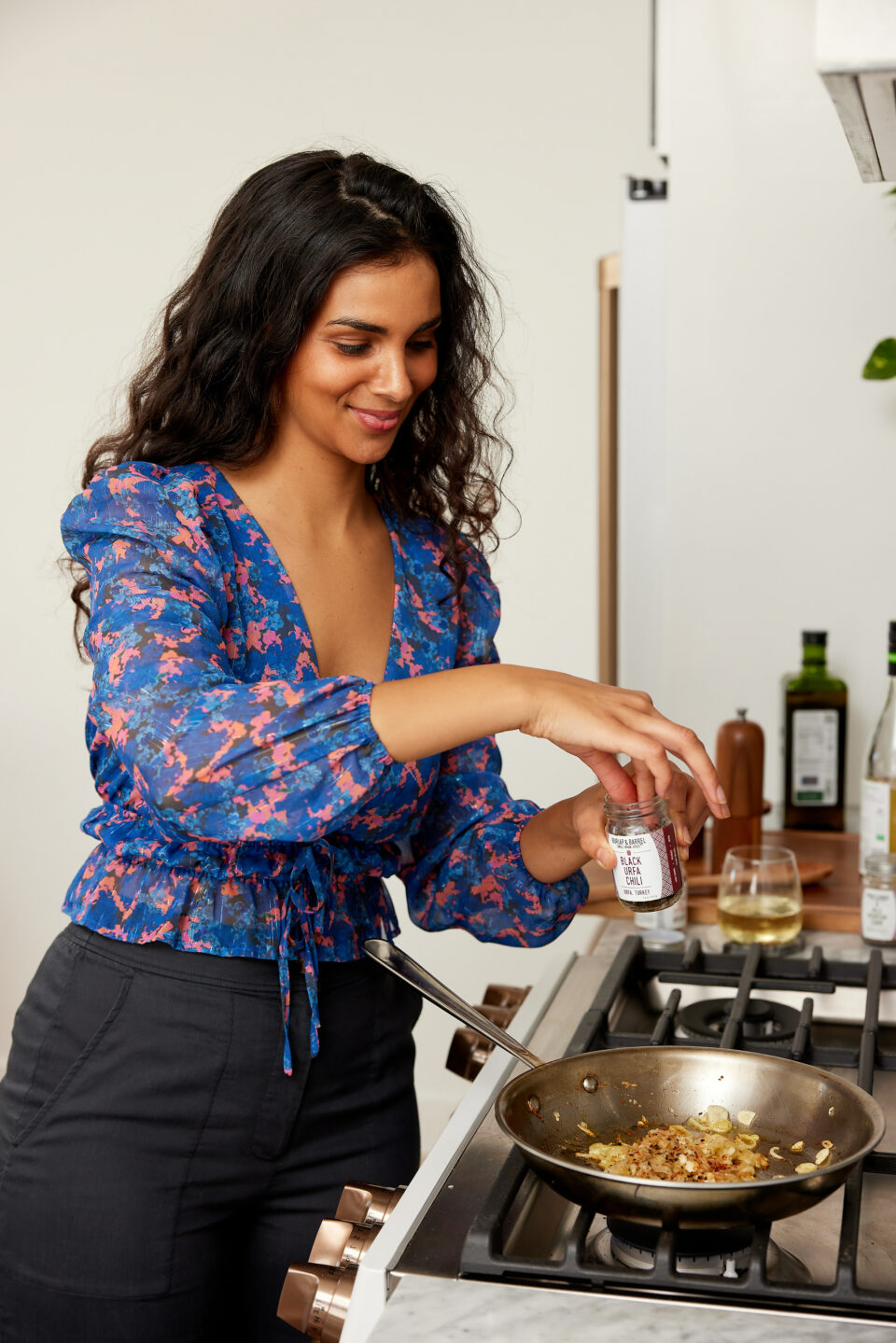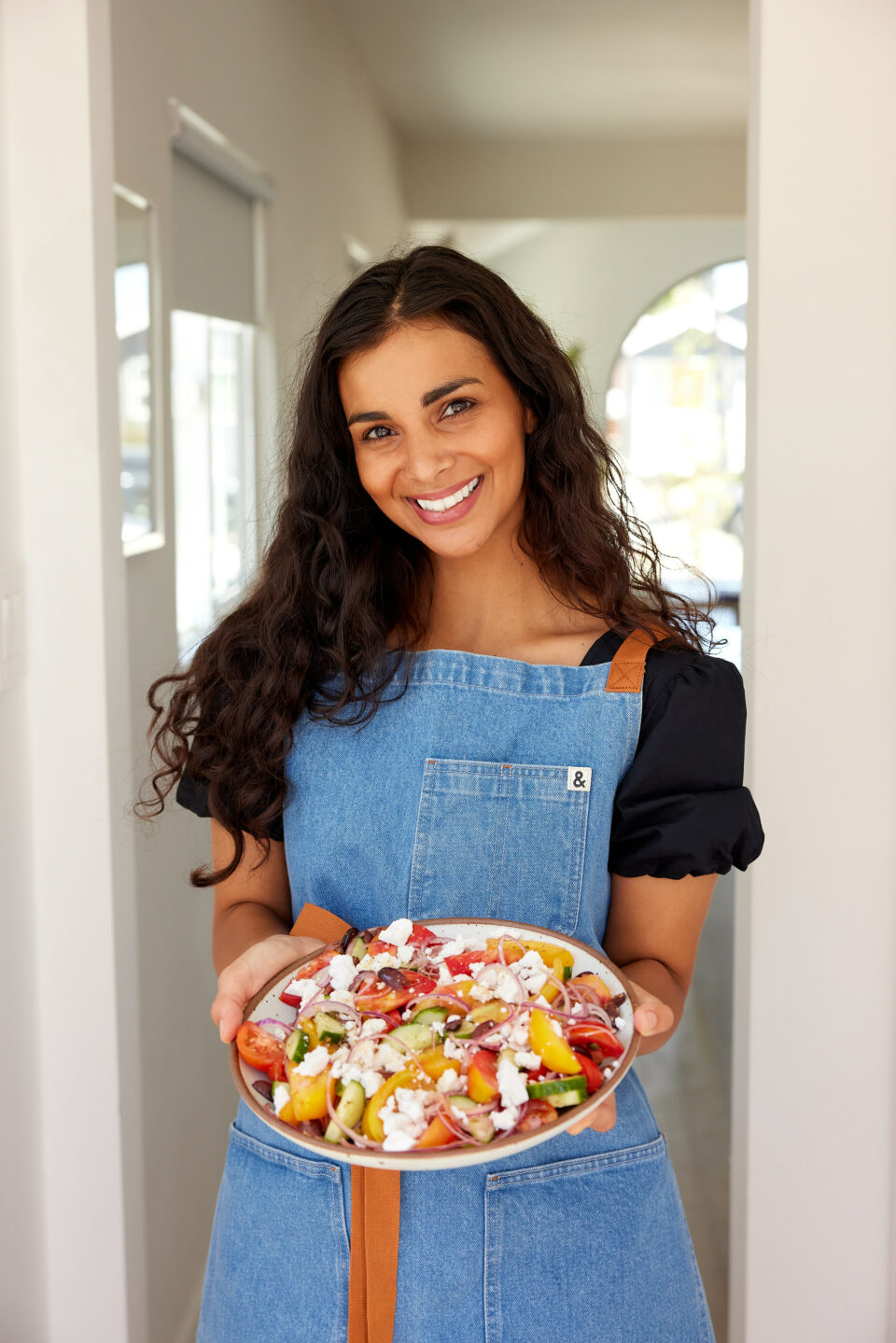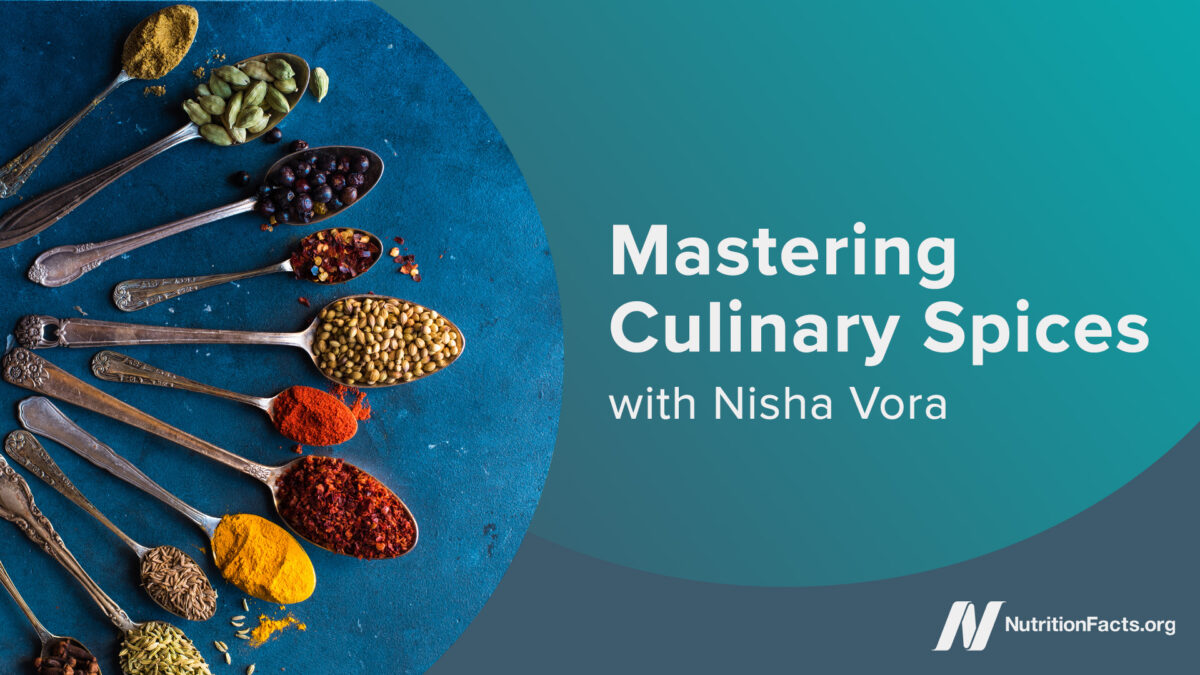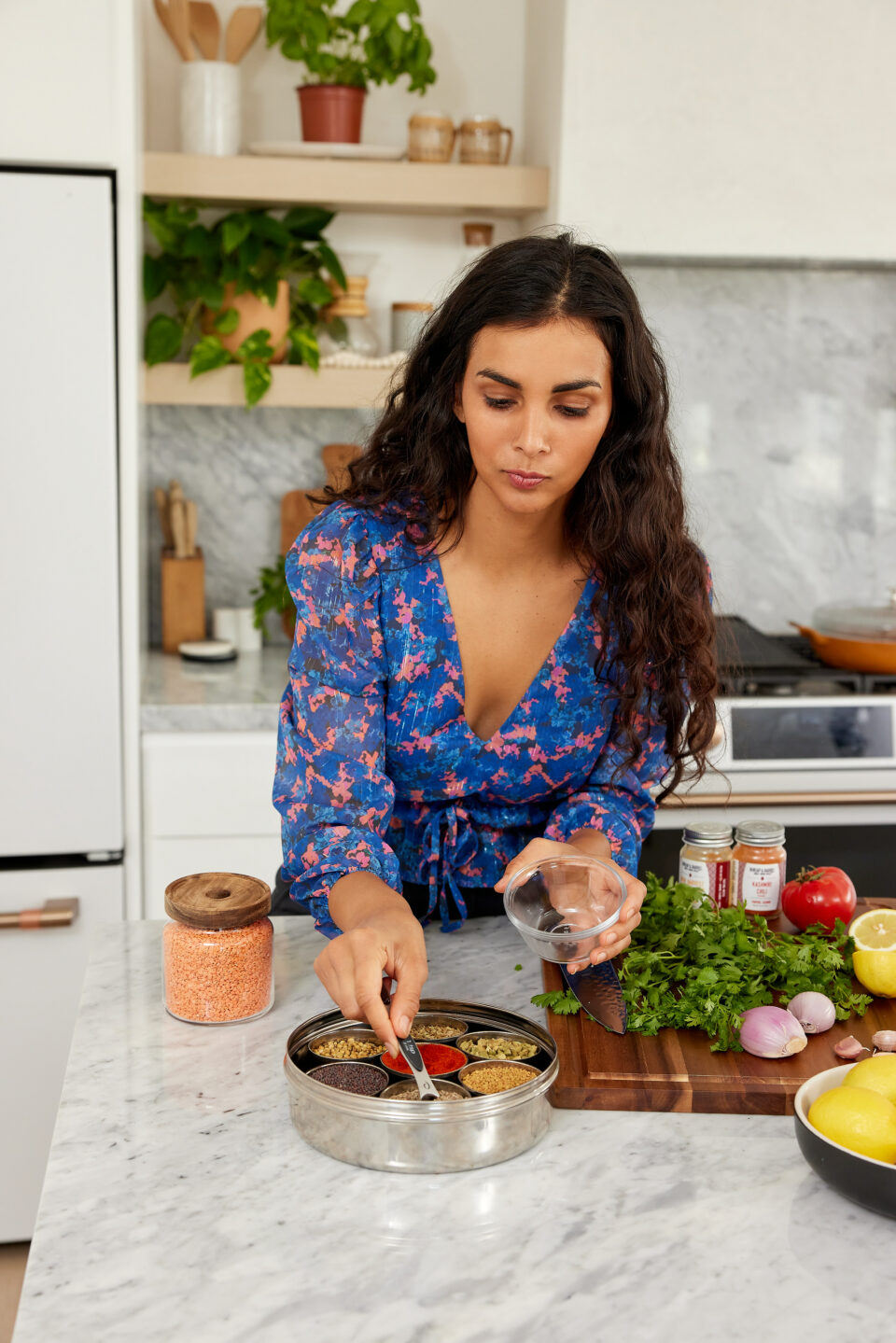| Meet Nisha Vora. We had the pleasure of talking with Nisha about all things spices. |
|
How did you learn about spices and their culinary richness? Were you taught by someone in your family, did you learn from experience, or both?
I credit most of what I know about spices to my mother. She’s been cooking Indian food for 40+ years, so cooking with spices is so intuitive for her. She doesn’t use measuring teaspoons yet her food is always perfectly spiced. Once I started to observe her in the kitchen, I found myself feeling more confident and eager to experiment with spices in my own cooking.
Why are spices essential for any kitchen and type of cuisine?
Spices are such a fabulous way to enliven virtually any type of cuisine. They can seriously enhance the flavor and aroma of countless dishes, from bean chili to tofu stir fries to breakfast cookies. They can even jazz up your morning bowl of oatmeal or your favorite banana bread.
It doesn’t hurt that most spices boast serious health benefits, including antioxidants and anti-inflammatory and anticarcinogenic properties, and even glucose- and cholesterol-lowering activities.
What are the top five must-have spices to keep on hand?
I’m sure most chefs will have varying answers, but for me, if I could choose just five, I’d pick earthy cumin, citrusy coriander, bold turmeric, sweet and warm cinnamon, and some sort of chile flakes for heat. (Red pepper flakes are available everywhere, but my personal favorite is Aleppo pepper.) While I rely on other spices and dried herbs like garlic and onion powder, dried ginger, and oregano, you can get those flavors from the fresh ingredients (e.g., whole onions, ginger, garlic, and fresh oregano), so they wouldn’t be in my top five must-haves.
What is the biggest mistake you see people make when it comes to using spices?
 |
Not toasting the spices first! Heat unlocks the volatile oils found inside of spices, causing them to change shape and form more complex flavor compounds. You’re basically getting more flavor bang for your buck when you toast spices. If your pot of chili has ever tasted bitter, it’s probably because the recipe simply added the ground spices into the liquid instead of toasting them first. (Usually, you’ll briefly toast your spices after you’ve sauteed the aromatics like onions and garlic.) |
What are the best ways to bring out the natural flavors of spices without using oils?
Buy whole spices, toast them, and then grind them.
Whole spices are a flavor powerhouse compared to pre-ground spices since they have protective seed coatings that keep them fresh for much longer than ground spices.
If you compare the aroma and flavor of a bottle of pre-ground cumin with freshly toasted whole cumin seeds, the difference is pretty dramatic. The latter has a nuttier, deeper and more complex flavor (and aroma).
To toast whole spices, simply preheat a dry frying pan over medium or medium-high heat. Add your spices and shake the pan back and forth or stir from time to time to prevent burning. It’ll take just a few minutes for the spices to turn a few shades darker and become super aromatic.
Take the spices off the heat. Once cooled, grind them using a spice grinder, mortar and pestle, or even a coffee grinder. Now use your ground spices in whatever dish that calls for them. This will take your soup, curry, stew, or whatever else you’re cooking to new heights.
How can home cooks use spices for the best results? Are there any tried and true strategies for better understanding the flavor profiles of spices and what pairs well together?
I recommend getting a copy of the Vegetarian Flavor Bible book. It lists every imaginable whole food ingredient, including spices, and gives you lots of flavor pairings and sample dishes to spark your imagination.
Learning which spices pair well together (and what quantities to use them in) is something that comes with practice, so don’t be shy about experimenting in the kitchen. You can also look to chefs who are masters of specific cuisines to see how they pair spices together. (YouTube is a fantastic resource.) I often find myself spending hours watching Indian chefs on YouTube. Even if they’re cooking something non-vegan, I inevitably learn something new about spices and how to incorporate them into my cooking.
Are all spices created equal? If not, how can people source quality spices?
All spices are definitely not created equal. I think it’s pretty easy to view spices as a pre-made commercial product, but spices are actually more like fresh vegetables or fruits. They’re grown by farmers working on farms and in fields, most often in developing countries, and growing and processing them is labor- and time-intensive.
In general, smaller brands that have shorter supply chains will be able to offer spices that are not only the freshest and most flavorful, but they typically also have more ethical and transparent practices around sourcing, sustainability, and labor.
Two of my favorite small businesses that source wonderful spices and prioritize fair wages and sustainable sourcing are Burlap and Barrel and Diaspora Co.
At supermarkets, I like using the brands Frontier Co-op, which offers a large selection of organic and Fair Trade certified spices, and Simply Organic.
What are the best ways to store spices? What is the general shelf life people should be mindful of?
Away from sunlight and heat, so ideally in your pantry or in a cupboard. If you’ve been storing your spices in a cabinet above your stove or oven, try finding a different spot, as the proximity to heat will damage your spices.
You also want to minimize their exposure to air, so airtight containers and tight-fitting glass jars or commercial-grade plastic bags are best.
Ground spices typically have a shelf life of six months to a year. Whole spices are usually good for one to two years. Open your spice bottle and take a whiff. If the aroma is faint or barely there, it’s past its prime.
You can revive older spices a bit by slowly toasting them in a dry pan. For whole spices, toast for three to four minutes over low heat and stir or toss constantly, or until they start to look a bit oily and smell aromatic. You need to be more careful with ground spices; they need just a minute.
What are some other essential or helpful tips you’d like to share about using spices in cooking?
Go easy on the turmeric! Too often I see home cooks add way too much turmeric. It’s a strong spice, and too much of it will overpower and even ruin your dish. A quarter or half teaspoon is usually sufficient, maybe a teaspoon if you’re cooking a spice-heavy Indian dish. It also needs to cook a bit longer than other ground spices; otherwise, it can taste a bit raw.
|
Please tell us a little bit about your work and career. I’m a vegan food blogger, YouTuber, cookbook author, and the creator of Rainbow Plant Life, a destination site for outstanding flavor-packed vegan recipes. On YouTube, I share informative yet entertaining videos where I teach home cooks how to level up their cooking skills from a plant-based perspective. I started Rainbow Plant Life as a creative outlet when I was still a lawyer, then transitioned into the food startup world where I worked for a few years while side hustling. I went full-time on Rainbow Plant Life in 2019, shortly after my first cookbook, The Vegan Instant Pot Cookbook, was released. My second cookbook will be published in 2024. Please tell us a little bit about your forthcoming book. My second cookbook will be published next year, in 2024 (Avery Books / Penguin Random House). It’s an encapsulation of my approach to building maximally flavorful vegan food that is fun and exciting yet approachable. |
 |
You can find Nisha here, on YouTube here, and on Instagram here.

